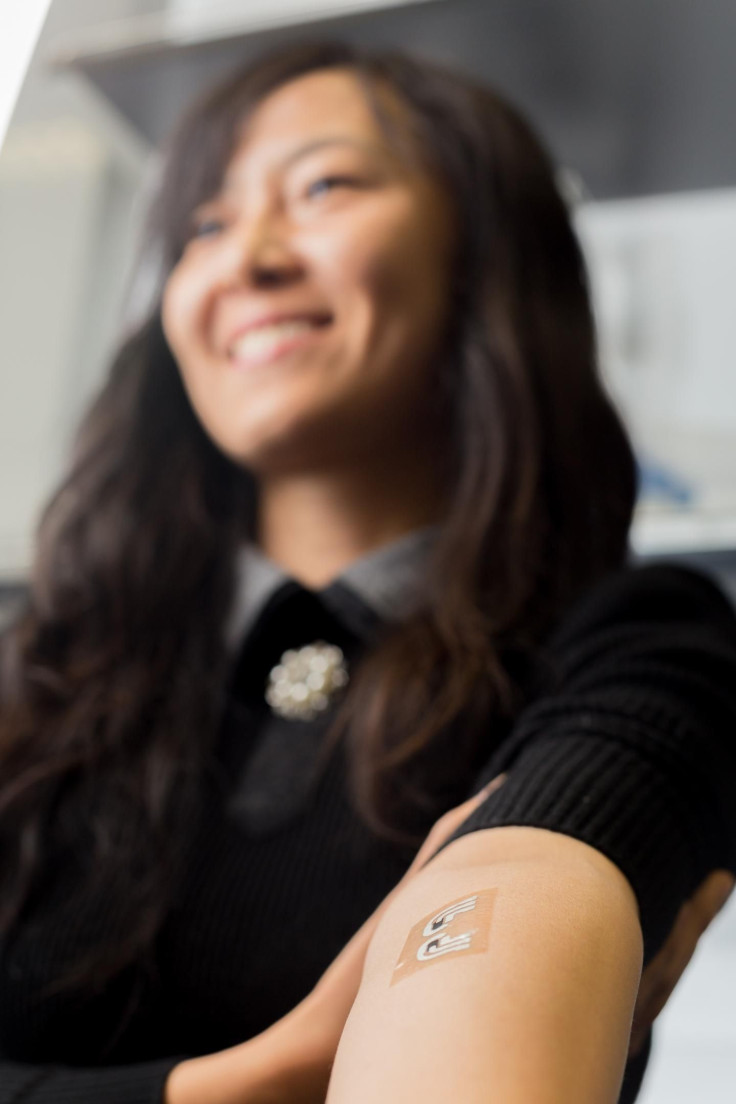Check Blood Glucose Levels With Temporary Tattoo That Uses Micro-Needles

A new experimental device may let diabetics conduct their usual blood-glucose monitoring without the hassle of tiny pin pricks, a new study reports. Instead, they’ll be treated to pain-free monitoring with the help of tiny micro-needles, which rely on 100 times less glucose than ordinary monitors yet deliver results that are just as accurate.
Ordinary needles are going the way of leeches. As sleeker, smarter, and less-invasive technology emerges, the tools that once defined certain diseases start to give patients new hope. Micro-needles — the technology in use for the latest breakthrough, which hails from the University of California, San Diego — are now allowing scientists to get the same benefits of regular needles. These include uses with flu vaccines, glaucoma medicine, and blood draws.

The new patch was developed by a team of UCSD nanoengineers, who are also developing a compatible digital readout that uses Bluetooth to store the levels in the cloud or get delivered straight to the person’s doctor. They also have hopes of lengthening the sensor’s shelf life on the skin, as it currently lasts for one day. On the upside, says graduate student Amay Bandodkar, the scientist who led the development effort, costs are still low.
“These are extremely inexpensive — a few cents — and hence can be replaced without much financial burden on the patient,” she said in a statement. With diabetes affecting roughly 29.1 million Americans, and more on the way if the nation’s obesity epidemic stays on its course, the need for smarter testing devices grows. The researchers hope someday the device can function as a mass-data gathering tool, to learn more about glucose levels as a function of what people eat.
The team’s study included seven people between the ages of 20 and 40 with no history of diabetes. Each person wore a patch for around 10 minutes, as the sodium ions in the fluid between skin cells moved toward the patch’s sensors. Inside this fluid is glucose, which the sensor picks up as an electrical charge. The stronger the charge, the more glucose is in the person’s body.

In the study, participants were measured before and after eating a sandwich and drinking a soda. As predicted, the patch measured glucose levels with similar accuracy as the traditional finger-prick method. Giving them even more hope, the patch has the potential to extend past just diabetes testing. In the future, athletes will be able to monitor their fitness according to how much lactate they produce. It could also detect alcohol levels and traces of other drugs, both illegal and prescribed.
The proof-of-concept device is still very much in the testing phase, as larger trials must still confirm its safety and accuracy. On the bright side, the early tests didn’t produce any irritating effects in the seven participants and all of them reported feeling nothing while wearing it, if only a slight tingle in the first 10 seconds.
Source: Bandodkar A, Jia W, Yardim C, Wang X, Ramirez J, Wang J. Tattoo-Based Noninvasive Glucose Monitoring: A Proof-of-Concept Study. Analytical Chemistry. 2015.
Published by Medicaldaily.com



























